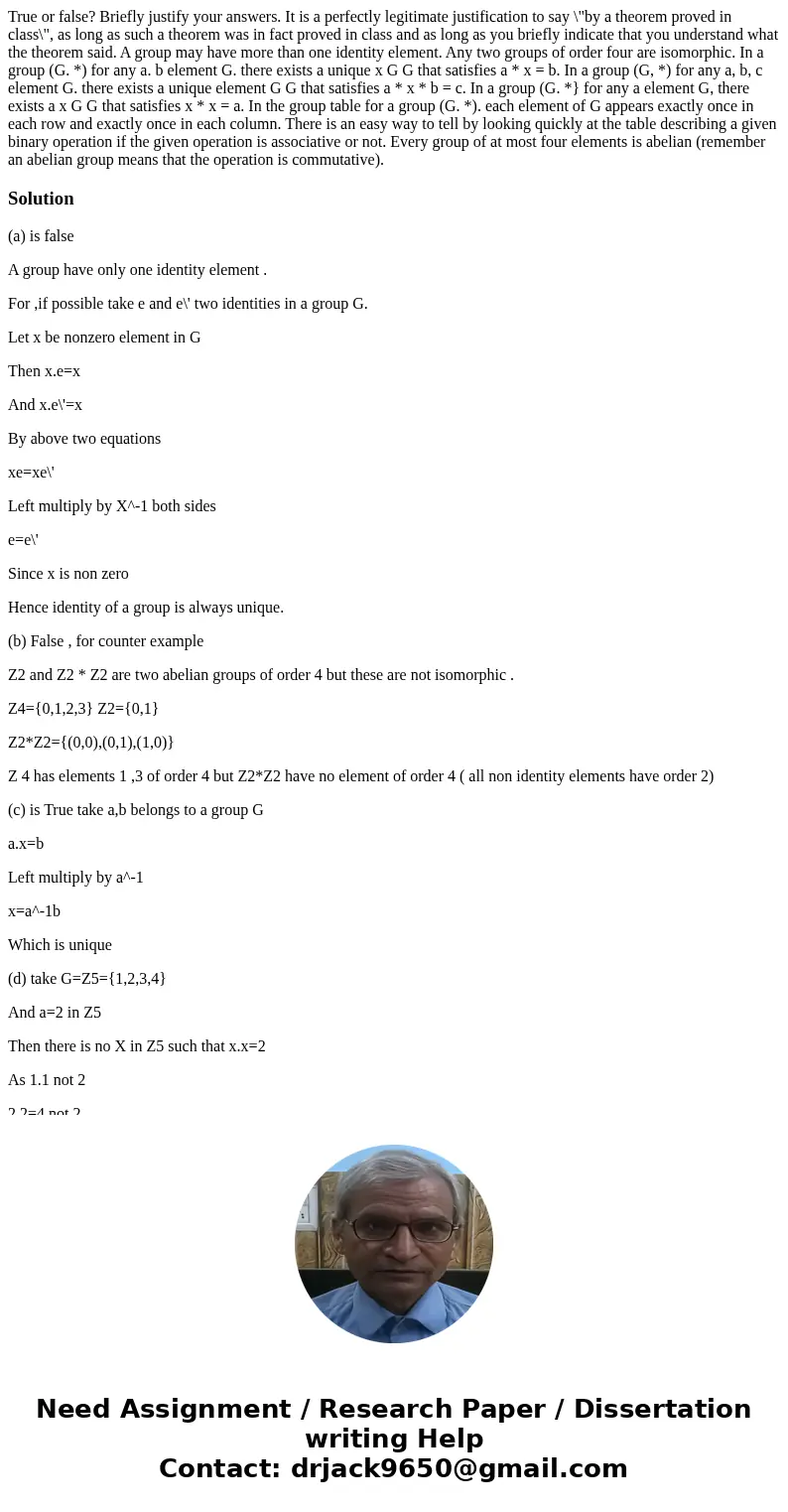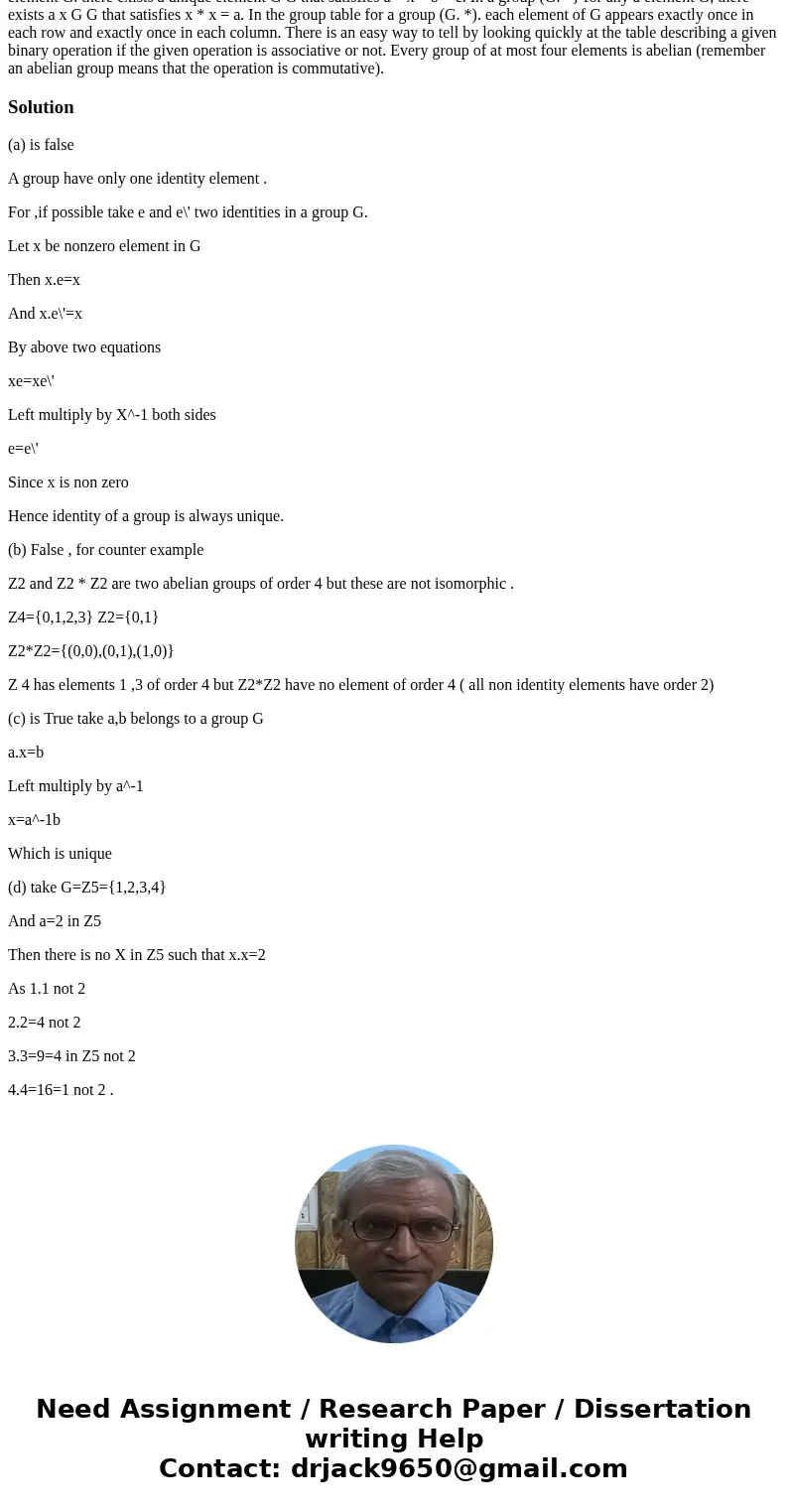True or false? Briefly justify your answers. It is a perfectly legitimate justification to say \"by a theorem proved in class\", as long as such a theorem was in fact proved in class and as long as you briefly indicate that you understand what the theorem said. A group may have more than one identity element. Any two groups of order four are isomorphic. In a group (G. *) for any a. b element G. there exists a unique x G G that satisfies a * x = b. In a group (G, *) for any a, b, c element G. there exists a unique element G G that satisfies a * x * b = c. In a group (G. *} for any a element G, there exists a x G G that satisfies x * x = a. In the group table for a group (G. *). each element of G appears exactly once in each row and exactly once in each column. There is an easy way to tell by looking quickly at the table describing a given binary operation if the given operation is associative or not. Every group of at most four elements is abelian (remember an abelian group means that the operation is commutative).
(a) is false
A group have only one identity element .
For ,if possible take e and e\' two identities in a group G.
Let x be nonzero element in G
Then x.e=x
And x.e\'=x
By above two equations
xe=xe\'
Left multiply by X^-1 both sides
e=e\'
Since x is non zero
Hence identity of a group is always unique.
(b) False , for counter example
Z2 and Z2 * Z2 are two abelian groups of order 4 but these are not isomorphic .
Z4={0,1,2,3} Z2={0,1}
Z2*Z2={(0,0),(0,1),(1,0)}
Z 4 has elements 1 ,3 of order 4 but Z2*Z2 have no element of order 4 ( all non identity elements have order 2)
(c) is True take a,b belongs to a group G
a.x=b
Left multiply by a^-1
x=a^-1b
Which is unique
(d) take G=Z5={1,2,3,4}
And a=2 in Z5
Then there is no X in Z5 such that x.x=2
As 1.1 not 2
2.2=4 not 2
3.3=9=4 in Z5 not 2
4.4=16=1 not 2 .


 Homework Sourse
Homework Sourse